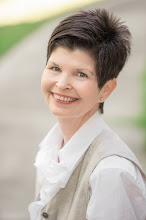The Last Innocent Hour, originally published in trade paper is now available for e-readers. It tells the story of Beth Cunningham who at eighteen was forced to leave the Texas farm where she was raised in order to escape her stepfather’s unwanted attention. She marries, but seven years later when her husband Charlie’s freewheeling gambling lifestyle jeopardizes their daughter Chrissy’s wellbeing, Beth sees no alternative other than to bring her family back to Texas. Beth’s mama has promised Beth’s stepfather is gone; Beth believes the nightmare that drove her from home—the one Charlie knows nothing about—is over. She believes her family will be safe. But within a matter of hours after their arrival, short innocent hours, a fresh storm, brutal and fearsome in its intensity, breaks. Charlie vanishes. Beth witnesses a murder, and with Chrissy in her arms, she’s running again. Running for her life. Too late, a voice whispers in her brain. Bang, bang you're next, taunts the voice behind her. And still she runs. Runs until she is falling. Runs until all reason is lost.
[caption id="attachment_598" align="alignright" width="300" caption="The "Big House" in winter - Beautiful!"]
The house Beth flees, the one that’s pictured on the front cover of The Last Innocent Hour, was built by my great grandfather Horace Rogers for his wife, my beautiful great grandmother, Stella Williams Rogers, in the town of Fort Smith, Arkansas. My grandmother and her two brothers were raised in the house. Family legend has it that Stella chose the site, that her heart was set on it, but the parcel of land belonged to the estate of a deceased Arkansas governor and my great grandfather had a time talking his way into the purchase of it. The house is beautifully situated on a gentle rise with grounds that drop away like a full lowering skirt. It unfortunately has passed from the family years ago and the way that it did is a story all in itself.
The seed for The Last Innocent Hour was planted when I was attending college in Fort Smith one semester and my mother arranged with the (then) owner of the house for us to come and have a tour. I was in awe from the moment I walked onto the veranda. The front door opens into an elegant foyer, tiled in yards of marble. Doorways open from the foyer into a variety of rooms, music room, parlor, a library. The kitchen and a glass conservatory are at the back of the house, behind the stairs. But what drew my eye that day was the staircase. It was so wide and sweeping, with beautifully carved newel posts, and led up to a generously proportioned second floor landing, where a tall beveled and stained glass window rose from the floor like a crown. Light spilled through it silvering the air. The effect was magical. I guess that’s why out of all the other beautiful details there were to see that day, it is the window over the stairway landing that I remember most vividly. I describe it in the novel, how it frames the glare of lightening, how the rain runs like tears down the glass.
I think my sister Susan and I are the only great grandchildren to see the interior of that house. My one regret is that due to an illness in the owner’s family, my mom and I could not tour the third floor ballroom or go out on the widow’s walk. Someday I would like to go back there. Last I knew “the big house”, as it is affectionately referred to in the family, was a bed and breakfast. I’ve mentioned to my siblings and cousins that we should hold a reunion there, walk the halls and rooms of our ancestors. Maybe one day we’ll do that!
This week, December 24th through December 31st, The Last Innocent Hour, among many other great e-books, is being featured in The Women’s Literary Café’s Year of the Indie Event.
About the WoMen’s Literary Café
The WoMen’s Literary Café (welcoming both men and women) is an extension of The Women’s Nest. This Internet hub bridges the gap between writers and readers with the sole mission of promoting great literature. The WLC provides free marketing services allowing authors to connect with readers, reviewers, and the media, through numerous promotions and a launch platform for new books. The WoMen’s Literary Café is ‘Where readers and authors unite!’ I encourage you to visit Women's Literary Cafe to learn more.
Melissa Foster, the founder of WLC, and also of The Women’s Nest, an online community for women, which connects women across the world, is also a very fine author. I don't know how she manages everything that she does, but I'm glad for her support and the support of the writing communities she has worked so tirelessly to create. For more about Melissa, visit her website at www.MelissaFoster.com
